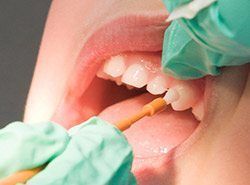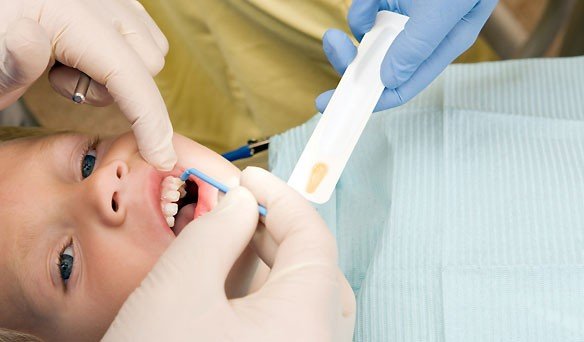What are the benefits of Flor?
It has been reported that the use of Fluorine (F‾) for the prevention and control of caries is both safe and highly effective (AAPD, 2014). Fluorine is the first line of defense against caries to prevent caries from starting (Carey, 2014). When fluoride is used appropriately, it is a very safe and effective method for both preventing dental caries and controlling dental caries (Horowitz, 1990; AAPD, 2014). The prevalence of F‾ use has been an important factor in the decline in the severity of dental caries in the USA and other economically developed countries (AAPD, 2014).
The purpose of topical fluoride applications is to delay, stop or reverse the progression of caries in dental hard tissue (Petersson, 1993). The systemic activity of fluorine on the teeth ends with the eruption of the teeth, after which F has only a topical effect. Therefore, topical F agents are widely used today for preventive treatment (Wefel and Harless, 1981; Gaffar et al., 1997; Atalay et al., 2009).

To whom should fluoride be applied?
Topical F‾ applications are indicated in people with initial caries lesion, undergoing orthodontic treatment, demineralized white areas generally in the gingival 1/3 part of the tooth, high caries activity, early childhood caries, root caries, and xerostomia due to long-term drug therapy (Beltrán). -Aguilar et al., 2000; Clarkson and Mc Loughlin, 2000; Civelek et al., 2004).

How is fluorine applied?
Agents used for topical F‾ applications are divided into individual and professional (by the dentist) applications. Individual applications; It has been developed as agents containing low concentrations of F‾, such as toothpaste, mouthwash, dental floss, toothpicks, chewing gum. All these agents are suitable for daily use. Professional applications are; developed as solution, gel, polish and slow release systems. These agents contain high doses of F‾ and are only applied by dentists every 3, 6, and 12 months, depending on the individual's caries activity level (Tenuta et al., 2009). In 2014, the American Academy of Pediatric Dentistry reported the doses of fluorine that should be used for children.
Is fluorine harmful?
Fluorine is an important mineral that strengthens the tooth enamel and protects the teeth against decay, especially in children. reported by health organizations. In addition, the World Health Organization carries out projects on adding fluoride to water and milk in Africa, Asia and Europe . However, in the report of the World Health Organization, it is noted that fluoride should be taken in sufficient quantities, otherwise it affects health negatively. It is a very safe practice to use fluoride in sufficient quantities at regular intervals by the dentist.
However, the risk of fluorosis has become an important problem with the widespread use of fluorine (Cochrane et al., 2008; Srinivasan et al., 2010). Careless and excessive use of topical agents also increases the risk of dental fluorosis (Carlos, 1987). Fluorosis means fluorine poisoning, discoloration and hypoplasia of teeth, which are characterized by excessive fluoride intake during the developmental period.
 English
English
 عربي
عربي
 Türkçe
Türkçe


Add New Comment